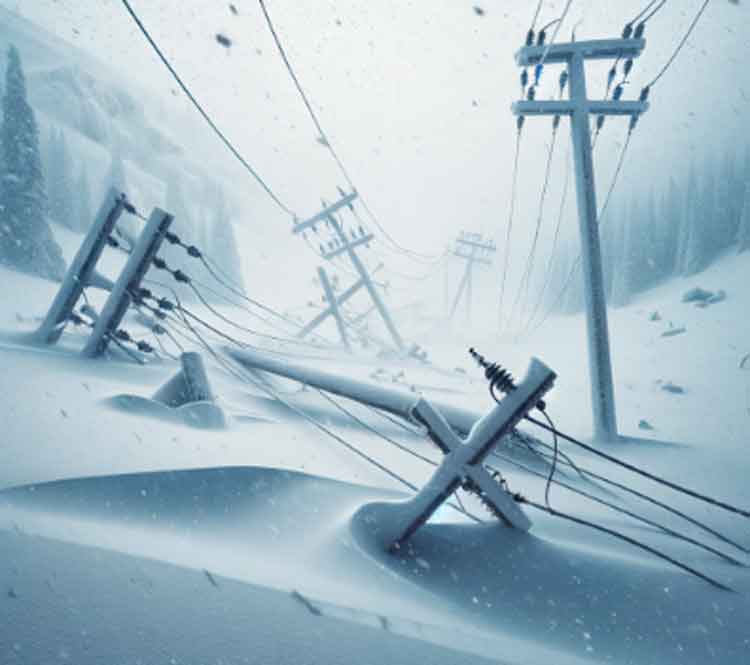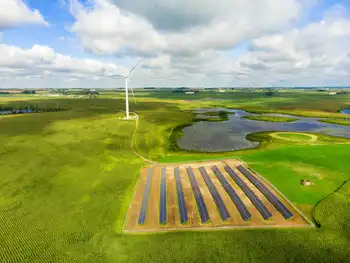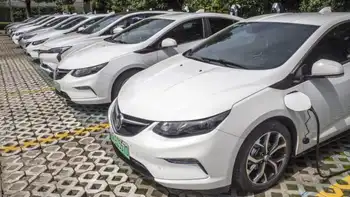China's nuclear energy on steady development track, say experts

High Voltage Maintenance Training Online
Our customized live online or in‑person group training can be delivered to your staff at your location.

- Live Online
- 12 hours Instructor-led
- Group Training Available
China Nuclear Power Expansion accelerates with reactor approvals, Hualong One and CAP1400 deployments, rising gigawatts, clean energy targets, carbon neutrality goals, and grid reliability benefits to meet coastal demand and reduce emissions.
Key Points
An accelerated reactor buildout to add clean capacity, curb emissions, and improve grid reliability nationwide.
✅ Approvals surge for Hualong One and CAP1400 third-gen reactors
✅ Capacity targets approach 100 GW installed by 2030
✅ Supports carbon neutrality, energy security, and lower costs
While China has failed to accomplish its 2020 nuclear target of 58 gigawatts under operation and 30 GW under construction, insiders are optimistic about prospects for the nonpolluting energy resource in China over the next five years as the country has stepped up nuclear approvals and construction since 2020.
China expects to record 49 operating nuclear facilities and capacity of more than 51 GW as of the end of 2020. Nuclear power currently makes up around 2.4 percent of the country's total installed energy capacity, said the China Nuclear Energy Association. There are 19 facilities that have received approval and are under construction, with capacity exceeding 20 GW, ranking top globally as nuclear project milestones worldwide continue, it said.
"With surging power demand from coastal regions, more domestic technology, including next-gen nuclear, will be adopted with installations likely nearing 100 GW by the end of 2030," said Wei Hanyang, a power market analyst at Bloomberg New Energy.
Following the Fukushima nuclear reactor disaster in 2011 in Japan, China has, like many countries including Japan, Germany and Switzerland, suspended nuclear power project approvals for a period, including construction of the pilot project of Shidaowan nuclear power plant in Shandong province that uses CAP1400 technology, based on third-generation Westinghouse AP1000 reactor technology.
As China promotes greener development and prioritizes safety and security of nuclear power plant construction, it has pledged to hit peak emissions before 2030 and achieve carbon neutrality by 2060, with electricity meeting 60% of energy use by 2060 according to Shell, the Shidaowan plant, originally scheduled to launch construction in 2014 and enter service in 2018, is expected to start fuel loading and begin operations this year.
Joseph Jacobelli, an independent energy analyst and executive vice-president for Asia business at Cenfura Ltd, a smart energy services company, said recent developments confirm China's ongoing commitment to further boost the country's nuclear sector.
"The nuclear plants can help meet China's goal of reducing greenhouse gas emissions as the country reduces coal power production and provide air pollution-free energy at a lower cost to consumers. China's need for clean energy means that nuclear power generation definitely has an important place in the long-term energy mix," Jacobelli said.
He added that Chinese companies' cost control capabilities and technological advancements, and operational performance improvements such as the AP1000 refueling outage record, are also likely to continue providing domestic companies with advantages, as the cost per kilowatt-hour is very important, especially as solar, wind and other clean energy solutions become even cheaper over the next few years.
China approved two nuclear projects in 2020- Hainan Changjiang nuclear power plant unit 2 and Zhejiang San'ao nuclear power plant unit 1. This is after the country launched three new nuclear power plants in 2019 in the provinces of Shandong, Fujian and Guangdong, which marked the end of a moratorium on new projects.
The Zhejiang San'ao nuclear power plant saw concrete poured for unit 1 on Dec 31, according to its operator China General Nuclear. It will be the first of six Hualong One pressurized water reactors to be built at the site as well as the first Chinese nuclear power plant project to involve private capital.
Jointly invested, constructed and operated by CGN, Zheneng Electric Power, Wenzhou Nuclear Energy Development, Cangnan County Haixi Construction Development and Geely Maijie Investment, the project creates a new model of mixed ownership of nuclear power enterprises, said CGN.
The world's first Hualong One reactor at unit 5 of China National Nuclear Corp's Fuqing nuclear plant in Fujian province was connected to the grid in November. With the start of work on San'ao unit 1, China now has further seven Hualong One units under construction, including Fuqing 6, which is scheduled to go online this year.
CNNC is also constructing one unit at Taipingling in Guangdong and two at Zhangzhou in Fujian province. CGN is building two at its Fangchenggang site in Guangxi Zhuang autonomous region. In addition, two Hualong One units are under construction at Karachi in Pakistan, while CGN proposes to use a UK version of the Hualong One at Bradwell in the United Kingdom, aligning with the country's green industrial revolution strategy.











